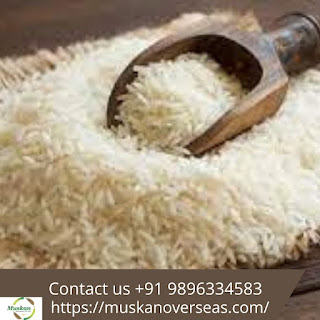Things To Consider Before Buying Basmati Rice!
The majority of people are aware that
basmati rice is unique. That it is, in some way, fancier than the stuff you are
accustomed to. Or perhaps more uncommon? Additional exclusivity? However, what
exactly is basmati rice? Why are we so fond of curries, pilafs, and braised
meats? Okay, that's enough questions. Make sure you buy high quality rice from Basmati
Rice Manufacturer In India.
What you need to know is as follows:
To Begin, There Are Numerous Varieties of Rice
Rice is not a one-size-fits-all crop,
since it is categorised into distinct size groups. There is long-grain,
medium-grain, and short-grain rice, and the names very much describe what each
is. The term "long-grain rice" refers to rice that is long and
slender, and it includes our beloved basmati, as well as jasmine and American
long-grain rice. The term "medium-grain" refers to grain that is in
the middle in terms of both length and breadth (duh), and includes kinds such
as Valencia or Arborio (great for paella, risotto, or just straight-up with a
bit of butter, salt, and chopped herbs). Additionally, short-grain kinds such
as sushi rice or American brown rice are short and squat, resulting in a
stickier finished product.
Where Is Basmati Rice Originated?
While many countries locally plant and
develop basmati rice, it was first farmed and grown in India and Pakistan.
India produces around two-thirds of the world's supply of both. With multiple basmati rice manufacturers, you need to
pick the right one. This origin establishes a strong connection with basmati
rice and establishes its identity as a side dish for your favourite curry meal.
What Does It Smell Like? How Does It Taste? What Purpose Does It
Serve?
Basmati is derived from the Hindi word
for "fragrant," which is entirely appropriate. The essence of Basmati
rice is its flavour and scent, which are highly spicy, nutty, and flowery
(compared to other rice that is, not hot sauce or cashews or like, actual
flowers). The textural value comes from the fact that the long grains remain
separate, non-sticky grains, which allows curry and other sauces to coat each
grain completely with flavour. And, as previously stated, long-grain rice is
ideal as a side dish for saucy recipes or as the basis for a pilaf.
How Do I Acquire the Best Stuff? What Am I Searching For?
Basmati that is of high quality does not
arrive in a plastic bag when you purchase it from Basmati Rice Exporter. For that premium grain movement, look for
cloth packing labelled with "extra-long grain." The longer the
basmati grain, the more desirable it is. Another critical indicator is a
slightly tapered grain end. The sides of basmati grains should never be flat.
The best basmati rice is not pearly
white; the grains should be slightly golden in colour, but not grey. That is
because high-quality basmati rice is aged, sometimes for several years, which
aids in properly drying the rice and keeping the grains fluffy and separated in
a pilaf.
How should basmati rice be cooked for optimal results?
If you can soak them in a dish of tap
water for 30 minutes prior to cooking them, that would be ideal. However, if
you skip the soaking phase, a decent quality basmati rice will produce
excellent results. We strongly advise you to prepare your basmati rice using
the traditional method. Simply fill a large pot halfway with water. Once the
water has reached a rolling boil, add the soaked (or washed) basmati rice. Stir
occasionally and monitor the grains' growth. From time to time, take up some
rice grains and press them between your fingers. If they easily smash, the rice
is done! Discard access water, which is high in starch. Your rice is now
prepared!
Add salt to the water to give your rice a touch more flavour and buy it from the


Comments
Post a Comment